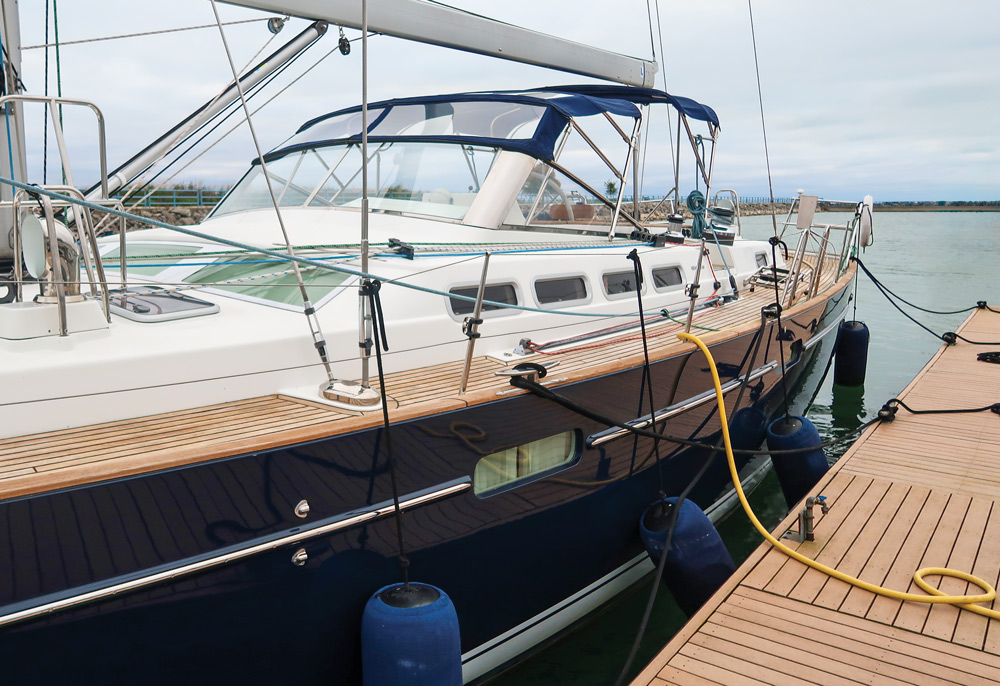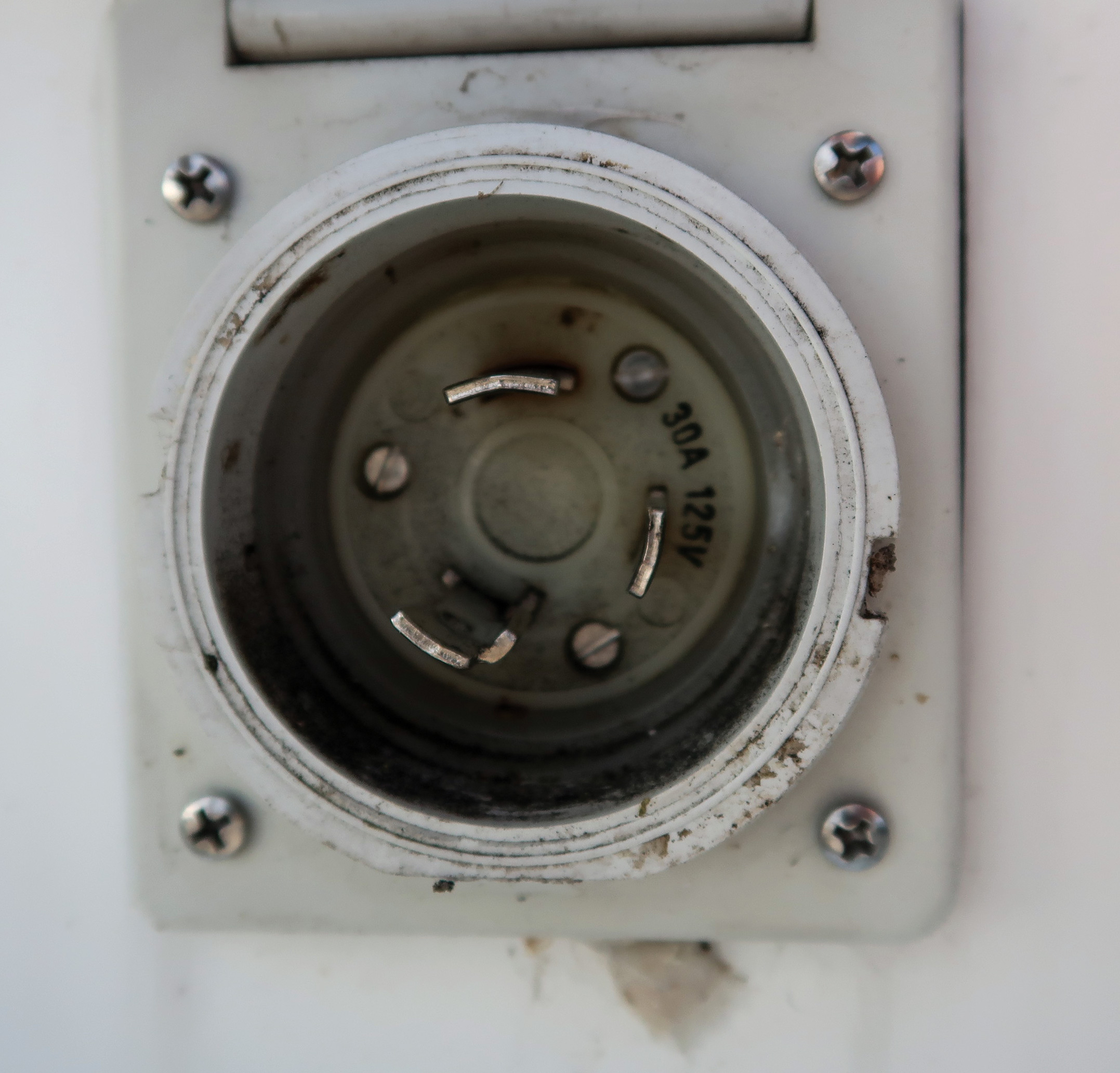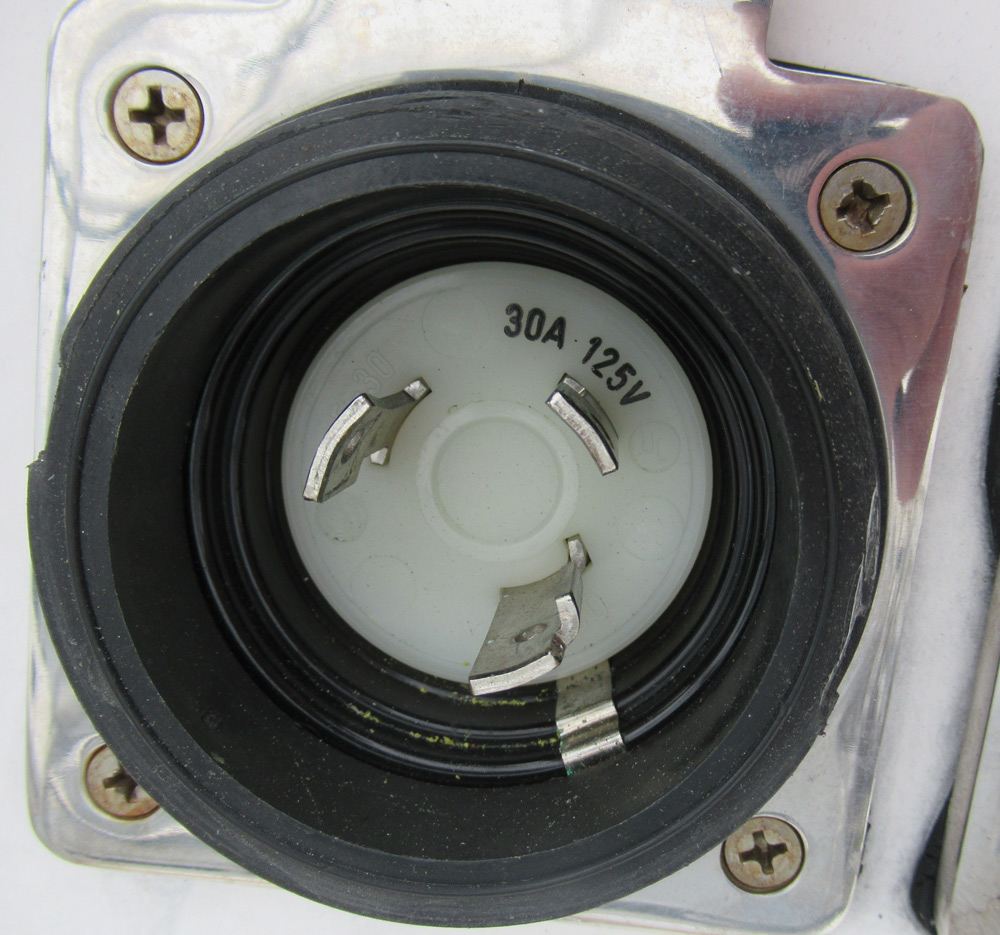Optimizing shore power
From adaptors to avoiding stray voltage, managing onboard power is key for safety and efficiency
Battery-sourced direct current power is the lifeblood of our boats, running lights, electronics, pumps and even starting our engines. And although we can do well with just DC, the ubiquitous yellow shore power cord providing alternating current shore power generally improves onboard life.
It’s hard to know the progression of things, but assume shore power was probably first brought onboard to run a battery charger to keep the DC side of the power system charged at the dock. Things have advanced quite a bit since then, and modern AC systems are pretty evolved, with outlets in every cabin, a water heater, air conditioning, microwave, refrigerator and more.
Types of systems

Outside the U.S., you will primarily find 230-volt 50-hertz AC systems. These systems supply 230 volts via two different outlets—a standard 16-amp and a physically larger 32-amp type. There are three wires in either outlet—a hot, a neutral and a safety ground.
Procedures to stay safe
You should take care when connecting or using shore power as AC power in any forms can be dangerous. First, ensure your cord set and receptacles are in good shape; any damage or corrosion should be addressed. A corroded receptacle or outlet will cause resistance, which can generate enough heat to cause a fire. Avoid handling your shore power system in the rain or other wet conditions as water can cause dangerous arcing.
There is a proper procedure when connecting or disconnecting shore power. You want to avoid connecting or disconnecting large loads all at once. You want to start with the shore breaker and the breakers/switches in your boat turned off. Next, connect the power cord to the shore pedestal and the boat inlet. Be sure to route the cord to keep it out of the water, well supported, and never under tension.
It may seem minor, but using the locking ring on the cord connectors is important. The ring serves two purposes, it will keep most of the water out of the connection, but more importantly it keeps the connector connected. Movement on a boat causes the connector to loosen up, making a poor connection and, just as a corroded receptacle will increase resistance, so will a loose connection. As mentioned earlier, resistance causes heat and has the potential to start a fire.
With the cord connected, turn on the shoreside breaker and go onto the boat to verify power is flowing. You may have a light indicating power and, very often, a voltmeter showing the incoming voltage. Some boats have a reverse polarity indicator light. If this light is illuminated, it indicates that the dock or your shore power cord is not wired correctly. If you see this, consult the dockmaster at the marina.
Next you can turn on the breakers you’d like to use. Flip them on one at time, verify things work, and enjoy the luxury of the shore power.
Adapters
Life is good if you can simply plug in your boat, but often your shore cord doesn’t match up with the receptacle on the dock. Luckily, there are adapters for most situations.
The most common situation is when a smaller boat with a 30-amp cord ends up in a large slip with a 240-volt 50-amp receptacle. There is a 50-to-30-amp adapter that adapts the 50-amp output down to a 30-amp connector and connects one hot, neutral and ground conductor.
The reverse situation is a little trickier. At times, a 50-amp boat must squeeze into a small marina with only 120-volt 30-amp outlets. There are two problems with this: the boat is expecting 240 volts and requires an outlet that fits the cord. A reverse Y adapter will allow you to connect, but you must pull power from two 30-amp outlets to get the 240 volts that your boat needs.
You may find yourself with a 30-amp cord and the only available source is typical residential 20-amp outlet. This situation often happens in the boatyard or on free public docks when cruising. You can make do in this situation using a 30-amp to 20-amp adapter. The adapter will get power aboard, but you are limited to the 20 amps that the outlet can provide.
Potential problems
Many new marinas (and some retrofitted older marinas) have safety features built into the shore power systems. The system is called Equipment Leakage Current Interruption (ELCI), and it operates very much like a residential ground fault circuit interrupter (GFCI). A ELCI breaker operates on the principle that the AC current will stay in balance and if there is an imbalance of 30 millivolts or more it will trip. Boats built in 2009 or after most likely have ELCI installed, as this is a voluntary standard by ABYC for vessels built after that year.
Boats built before 2009 or those that do not have ELCI installed can benefit from this retrofit, as it is good insurance against stray current risk. Since an ELCI can serve as the main shore power circuit breaker, it can replace the standard main shore power circuit breaker. Alternatively, an ELCI can be installed at a minimum of 10 feet from the shore power inlet between the existing main shore power circuit breaker and shore power inlet. This is a good thing, as leaking current is dangerous and can imply someone being electrocuted or an electrical fire.

Outlets onboard should be GFCI protected. The difference between an ELCI breaker and GFCI outlet is that a GFCI outlet is there to protect you from electrical shock. GFCI outlets trip at 5 millivolts within 5 milliseconds. Newer boats will most likely have these installed in the moisture prone areas such as the head, galley and weather deck. Older boats most likely do not have GFCI outlets installed. Installing GFCI outlets is a recommended retrofit on all boats in all locations. You are, after all, on a boat surrounded by water.
There is also a potential corrosion risk with shore power. Small DC currents can enter the boat via the shore power ground conductor. The current will tend to exit the boat via underwater metal such as the propshaft. When this happens, the sacrificial anodes (zincs) on your boat will be depleted very quickly. After the zincs are consumed, the base metal of the running gear or through hulls can be eaten away.
The key to stopping this potential corrosive action is to break the ground connection for DC currents but maintain it for safety reasons for AC current. This is commonly done with a fail safe galvanic isolator. The isolator is connected in the ground path on the boat. The components in the isolator stop the corrosion causing DC current, but allow AC current to flow.

Shore power makes life better onboard. In addition to keeping the batteries topped off, it allows for all the shoreside luxuries. But like any system, it comes with risk, and you must pay attention to keep you and your boat safe.

Comments